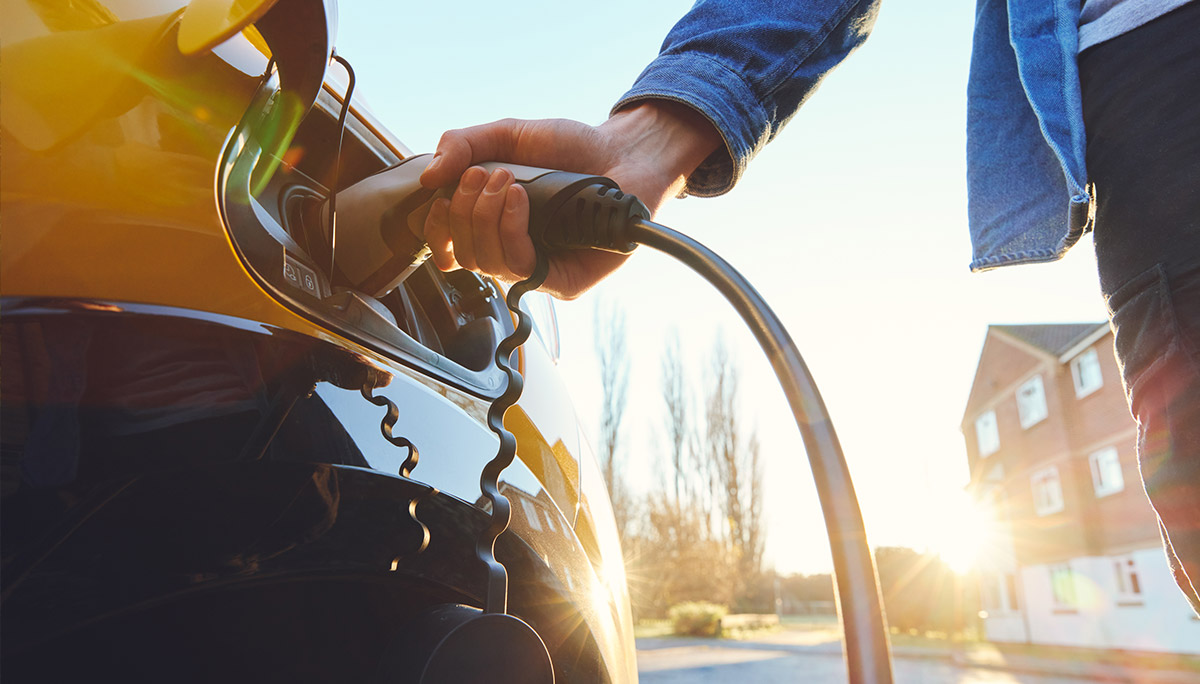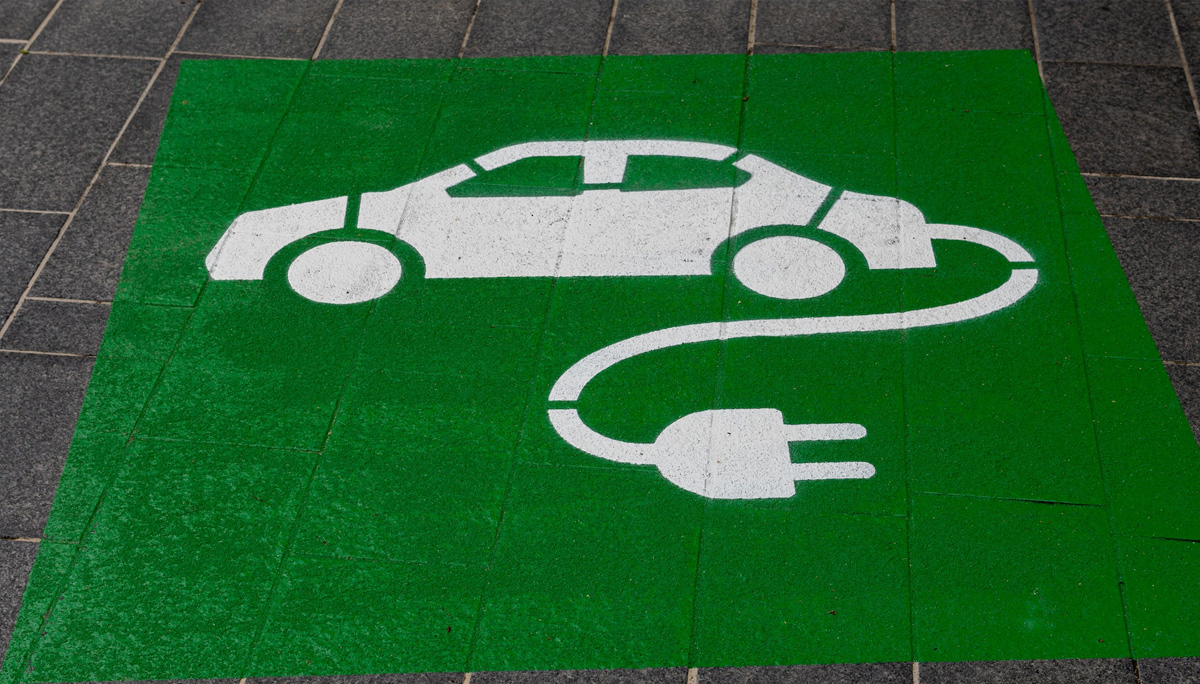
The five keys to a competitive EV buying journey
19 September 2023
The complete guide to the home EV charger installation grant
30 January 2024How green are EVs?
As electric vehicles (EVs) go mainstream, their reputation as cleaner, greener alternatives to fossil-fueled cars grows. But what exactly makes them eco-friendly? And do they really have no environmental effects?
In this article, we’ll break down why EVs are considered better for the environment, and ensure you have all the right intel on their green credentials.
Comparing the carbon footprint: EVs versus ICE (internal combustion engine)
OK. Let’s start by addressing the elephant in the room: Nobody’s claiming that electric cars have zero environmental impact. They do still have a carbon footprint. But how does it compare to their diesel and petrol-guzzling counterparts?
To get the full picture, we need to look at the carbon footprint created when the cars are manufactured, as well as the pollution they create when they’re driven.
It’s also important to note that it’s impossible to get an exact figure that covers all EVs or all internal combustion engine (ICE) vehicles; there are just too many variables. How people drive, how different countries produce electricity, and the size and type of cars, to name just a few.
What we can do is look at average figures to tell us if EVs really are that green.
Manufacturing EVs vs ICEs
When it comes to manufacturing, the carbon footprint of a typical EV chassis and bodywork is very similar to an ICE.
The EV’s battery, however, typically adds about the same again to the EV’s carbon footprint.
So, in terms of our whole-picture carbon footprint, the EV begins life with a hefty penalty.
[advert]
Driving EVs vs ICEs
When the driving starts, the EV’s eco creds really begin to shine through.
Every time you drive an ICE vehicle, you’re burning oil and pumping a constant stream of harmful smoke out of the exhaust, or tailpipe.
EVs, on the other hand, don’t burn anything. They don’t even have a tailpipe.
While a diesel or petrol car piles on the pollution and greenhouse gases every time it drives, the EV hums quietly and cleanly.
There are, of course, emissions associated with the electricity you use to charge up. But it’s much less than driving a diesel or petrol car. And if you use a green electricity tariff, or you charge your EV using solar energy, the difference gets even bigger.
The zero tailpipe emissions quickly outweigh the carbon footprint penalty created by manufacturing the battery.
The International Council on Clean Transportation has crunched the numbers. Their data shows that an average European petrol car produces 258g CO2e per km driven over its lifecycle, including the manufacturing footprint.
An average electric car charged with UK grid electricity, on the other hand, produces just 94g CO2e per km driven, over its whole lifecycle.
That’s getting on for 3 times better!
What about the battery?
For many concerned environmentalists, another large question mark hangs over what happens to end-of-life EV batteries.
To start with, it should be noted that EV batteries last a long time. MG reckon you can expect 10-20 years out of one.
And while it’s true there aren’t many EV battery recycling plants in the UK at the moment, that’s only because the demand isn’t there yet.
There are plenty of companies recycling lithium-ion batteries (the main type of battery used in EVs) from other devices, such as e-scooters and e-bikes.
EVs have only been selling en masse for a few years, and they’ve been lasting well. There just isn’t a supply of cooked EV batteries yet to justify major investment in the recycling industry. But when the time comes, the technology’s there to strip them down and recover the precious metals in them for reuse.
And right now, plenty of used EV batteries are finding a second life as batteries in other settings, such as home energy storage. There’s life in the old dogs yet.
Brake and tyre particulate matter
You might have heard that EVs are heavier, and therefore they shed more polluting brake and tyre dust.
There’s not much truth in that, either.
For starters, EVs aren’t that much heavier than ICE cars, especially when it comes to SUVs. Plus, as battery technology is improving all the time, the cars are getting lighter. Manufacturers are constantly striving to improve the environmental performance of their vehicles.
Tyre manufacturers are also working on improving tyre wear; it’s an issue that affects all cars, not just electric cars.
In terms of brake dust, well, EVs actually produce significantly less than their petrol and diesel counterparts.
Brake dust is created when the pads wear against the discs in a traditional braking setup.
But when it comes to EVs, a lot of the braking is done by regenerative braking. This is where the electric motor works in reverse to slow the car down (and it charges the battery at the same time – magic, eh?)
Brake wear is therefore much slower on an EV than an ICE vehicle. And that means less – not more – brake dust pollution.
The greenest way to run your EV
The carbon footprint associated with driving your EV is heavily impacted by how you charge it.
If you want to max out on sustainability (and who doesn’t?) then you should choose a green electricity tariff for your home charging. Charging off-peak will also help balance the energy demand on the National Grid.
Choosing a home charging setup with solar panels is even better. Solar energy is zero carbon (and free!). You’ll be able to drive around smug in the knowledge that you’ve got the most cutting edge, sustainable, and wallet-friendly driving setup available.
About Powerverse
We’re industry experts in home energy management. Our easy-to-use app is built for your future electric home. It will effortlessly sync your solar, battery, heat pump, EV charger and more, helping you cut costs and your carbon footprint on your way to becoming energy-independent. Curious to know more? Talk to one of our experts.

